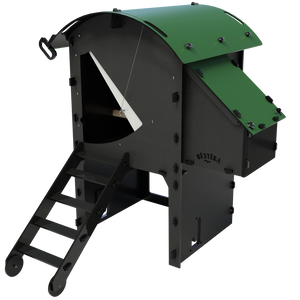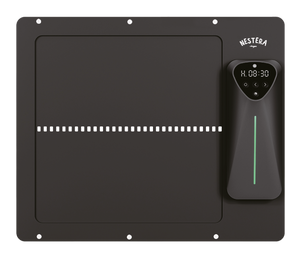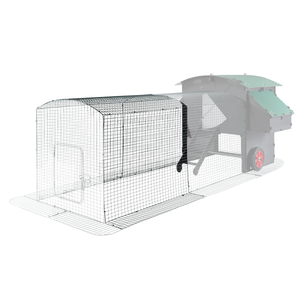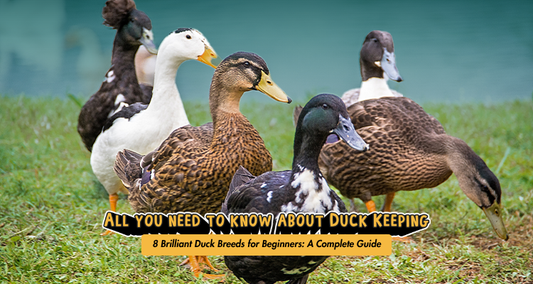As a responsible chicken keeper, ensuring the well-being of your feathered friends is a top priority. One often-overlooked aspect of chicken care is providing them with access to a dust bath or a designated dust area. In this article, we'll explain why hens need dust baths and how you can make one to keep them healthy.
Why Do Chickens Need Dust Baths?
Chickens, like many other animals, instinctively engage in dust bathing. This behaviour is not just a chicken quirk; it serves several crucial purposes for their health and hygiene.
- Parasite Control: One of the primary reasons hens indulge in dust baths is to ward off parasites. When chickens dust bathe, they vigorously kick and flap, creating a cloud of fine dust that envelops their bodies. This dust suffocates and dislodges external parasites like mites and lice, helping to keep your chickens free from infestations.
- Feather Maintenance: Dust baths play a significant role in feather maintenance. As chickens roll and wriggle in the dust, it absorbs excess oil and moisture from their feathers. This natural feather-cleaning process keeps their plumage clean, prevents matting, and promotes better insulation.
- Stress Relief: Dust bathing also serves as a form of stress relief for chickens. It's not just about physical health; it also contributes to their mental well-being. Engaging in this natural behaviour allows them to unwind and relax.

Creating a Dust Bath Area:
Now we know dust baths are important, let's see how to make a good dust bath area for chickens.
- Natural Dust Bathing Sites: Chickens instinctively choose a spot beneath their coop or in a shaded area of the yard to set up their dust bath. And our Lodge and Raised coops are elevated off the ground enough to offer your chooks a sheltered and safe area for dust-bathing. You may notice them scratching and loosening the soil. If they've already established a spot, simply ensure it stays dry and replenish it with dusting material as needed.
- Making Your Own Dust Bath: If your chickens haven't chosen a site, or you want to create one yourself, it's a straightforward process. Start with a container or designated area in your coop or run.
Materials you'll need:
- Dry Soil: The base of your dust bath should be dry soil, preferably sandy or loamy soil. Avoid clayey or wet soils that can become muddy.
- Ash from the Fire: Wood ash from your fireplace or fire pit can be added to the soil mixture. It helps to absorb excess moisture and enhances the dust bath's effectiveness.
- Light and White Powders: Some chicken keepers also add diatomaceous earth or food-grade DE to the mix. These powders can provide additional protection against external parasites.
Creating the Dust Bath:
- Mix the dry soil, ash, and any additional powders you choose in your designated dust bath area or container.
- Ensure the mixture remains dry and loose, as this is what chickens prefer for dust bathing.
- Place the dust bath in a shaded area to prevent it from becoming too hot in the sun.
Maintaining the Dust Bath:
Regular maintenance is key to keeping your chickens' dust bath effective and hygienic. Refresh the mixture as needed to keep it dry and free of contaminants. If your hens have a natural dust bath area, monitor it for signs of depletion and add more material as necessary.

In summary, giving your chickens a place to take a dust bath is important for their care. It supports their physical and mental well-being by aiding in parasite control, feather maintenance, and stress relief. Whether they choose to create their own dust bath or you decide to make one, ensuring this natural behaviour is encouraged will keep your flock happy and healthy for years to come.





















